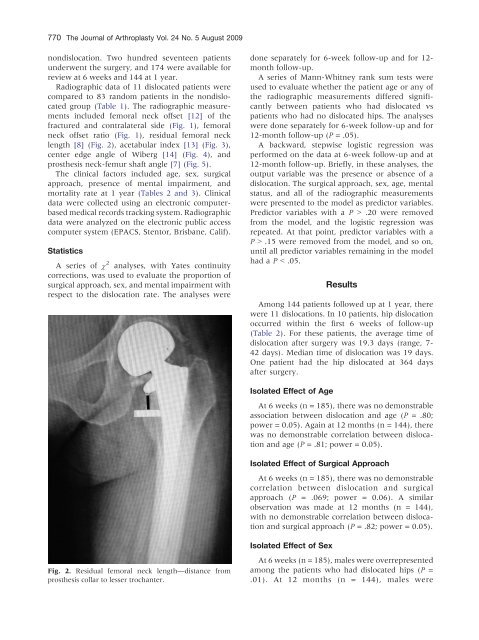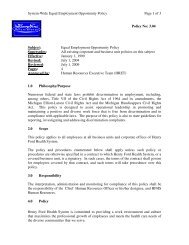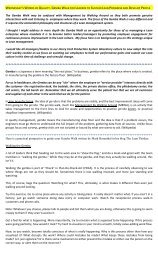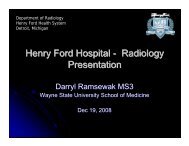Hip Dislocation After Modular Unipolar Hemiarthroplasty
Hip Dislocation After Modular Unipolar Hemiarthroplasty
Hip Dislocation After Modular Unipolar Hemiarthroplasty
Create successful ePaper yourself
Turn your PDF publications into a flip-book with our unique Google optimized e-Paper software.
770 The Journal of Arthroplasty Vol. 24 No. 5 August 2009nondislocation. Two hundred seventeen patientsunderwent the surgery, and 174 were available forreview at 6 weeks and 144 at 1 year.Radiographic data of 11 dislocated patients werecompared to 83 random patients in the nondislocatedgroup (Table 1). The radiographic measurementsincluded femoral neck offset [12] of thefractured and contralateral side (Fig. 1), femoralneck offset ratio (Fig. 1), residual femoral necklength [8] (Fig. 2), acetabular index [13] (Fig. 3),center edge angle of Wiberg [14] (Fig. 4), andprosthesis neck-femur shaft angle [7] (Fig. 5).The clinical factors included age, sex, surgicalapproach, presence of mental impairment, andmortality rate at 1 year (Tables 2 and 3). Clinicaldata were collected using an electronic computerbasedmedical records tracking system. Radiographicdata were analyzed on the electronic public accesscomputer system (EPACS, Stentor, Brisbane, Calif).StatisticsA series of χ 2 analyses, with Yates continuitycorrections, was used to evaluate the proportion ofsurgical approach, sex, and mental impairment withrespect to the dislocation rate. The analyses weredone separately for 6-week follow-up and for 12-month follow-up.A series of Mann-Whitney rank sum tests wereused to evaluate whether the patient age or any ofthe radiographic measurements differed significantlybetween patients who had dislocated vspatients who had no dislocated hips. The analyseswere done separately for 6-week follow-up and for12-month follow-up (P = .05).A backward, stepwise logistic regression wasperformed on the data at 6-week follow-up and at12-month follow-up. Briefly, in these analyses, theoutput variable was the presence or absence of adislocation. The surgical approach, sex, age, mentalstatus, and all of the radiographic measurementswere presented to the model as predictor variables.Predictor variables with a P N .20 were removedfrom the model, and the logistic regression wasrepeated. At that point, predictor variables with aP N .15 were removed from the model, and so on,until all predictor variables remaining in the modelhad a P b .05.ResultsAmong 144 patients followed up at 1 year, therewere 11 dislocations. In 10 patients, hip dislocationoccurred within the first 6 weeks of follow-up(Table 2). For these patients, the average time ofdislocation after surgery was 19.3 days (range, 7-42 days). Median time of dislocation was 19 days.One patient had the hip dislocated at 364 daysafter surgery.Isolated Effect of AgeAt 6 weeks (n = 185), there was no demonstrableassociation between dislocation and age (P = .80;power = 0.05). Again at 12 months (n = 144), therewas no demonstrable correlation between dislocationand age (P = .81; power = 0.05).Isolated Effect of Surgical ApproachAt 6 weeks (n = 185), there was no demonstrablecorrelation between dislocation and surgicalapproach (P = .069; power = 0.06). A similarobservation was made at 12 months (n = 144),with no demonstrable correlation between dislocationand surgical approach (P = .82; power = 0.05).Fig. 2. Residual femoral neck length—distance fromprosthesis collar to lesser trochanter.Isolated Effect of SexAt 6 weeks (n = 185), males were overrepresentedamong the patients who had dislocated hips (P =.01). At 12 months (n = 144), males were
















